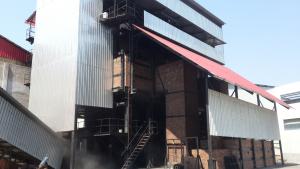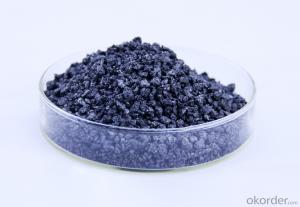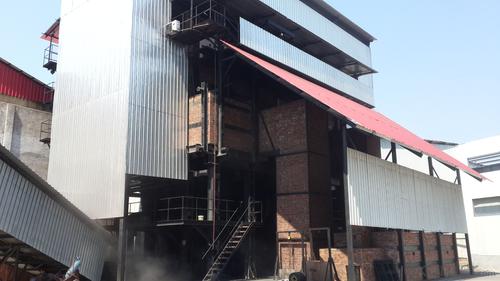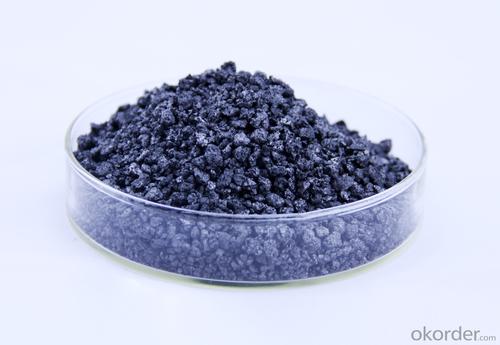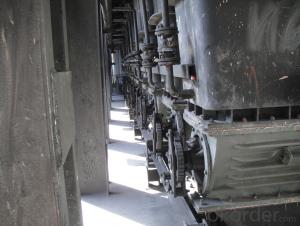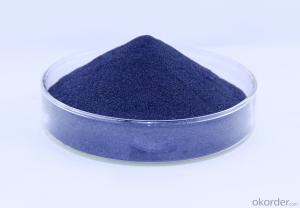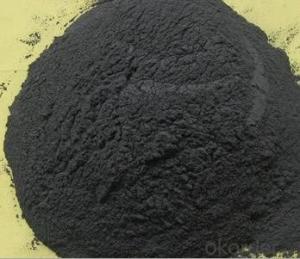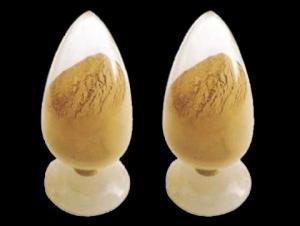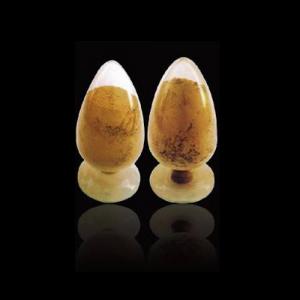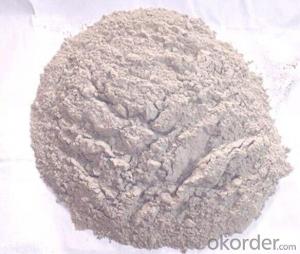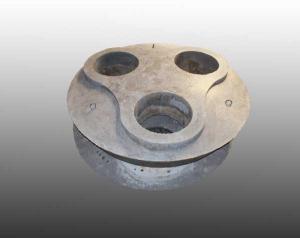Monolithic Refractories for Iron and Steel Industry - Coaly Carbon Additive with Good Quantity
- Loading Port:
- China main port
- Payment Terms:
- TT or LC
- Min Order Qty:
- 20 m.t
- Supply Capability:
- 1000 m.t/month
OKorder Service Pledge
OKorder Financial Service
You Might Also Like
Packaging & Delivery
| Packaging Details: | 25kg paper bag into 1t weaving bag 5kg, 10kg and 20kg weaving bag into 1t weaving bag 25kg weaving bag put on pallet covered with entanglement wrap product direct into packing bag 25kg paper bag put on pallet covered with entanglement Wrap 25kg weaving bag into 1t weaving bag |
| Delivery Detail: | depend on the quantity |
<STYLE type=text/css>.richtext [data-maya] { width: 750px; }
sell carbon additive /Calcined petroleum coke/Graphite petroleum coke
stable quality
carburizer for special steel and ductile iron
high carbon, low sulphur
sell carbon additive
stable quality
used as carburizer for special steel and ductile iron
high carbon, low sulphur
quick delivery
Specifications:
Carbon Additive Graphitized Petroleum Coke Artificial Graphite Scrape Carburizer | F.C (Min) | 99% | 98.5% | 98% |
S (Max) | 0.05% | 0.05% | 0.05% | |
ASH (Max) | 0.5% | 0.80% | 1% | |
V.M(Max) | 0.5% | 0.70% | 1% | |
H2O(Max) | 0.5% | 0.50% | 0.5% | |
Size: | 0.3-5mm,0.5-5mm,1-5mm,3-8mm,ect. | |||
GPC is also called artificial graphite scraps, characterized by high carbon, low sulphur, low nitrogen, causing less slag in the furnace. The finished steel and iron have a better quality by using GPC.
Calcined Petroleum Coke
FC:98.5%min,
S:0.5%max
A:0.8%max
V:0.7%max
Mositure:0.5%max
Size:1-5mm
This product is mainly used in steel-making and foundry. Calcined Petroleum Coke
Calcined Petroleum Coke comes from delayed coke which extracted from oil refinery. Although Calcined Petroleum Coke contains a little bit higher level of sulfur and nitrogen than pitch coke, the price advantage still makes it widely used during steel-making and founding as a kind of carbon additive/carburant.
Technology:
Laborary Equpment
In our lab,we has a high precision balance,mullfe furnace,sample making machine, dring box,sulfur measurement instrument and other calibratiing equipments.As a result,before deliverung to our customers,our products have to pass a strict test to ensure the quality and components.The testing reports will be sent to our customers to confirm untill they satisfy with it.
Packaging & Delivery
Packaging Detail:25kg paper bag into 1t weaving bag 5kg, 10kg and 20kg weaving bag into 1t weaving bag 25kg weaving bag put on pallet covered with entanglement wrap product direct into packing bag 25kg paper bag put on pallet covered with entanglement Wrap 25kg weaving bag into 1t weaving bag.
Delivery Details: 7 days
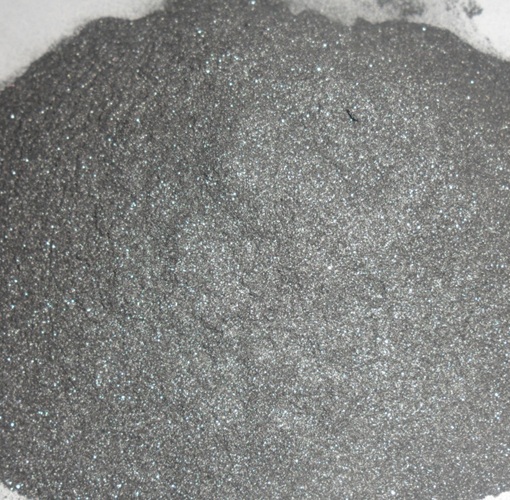
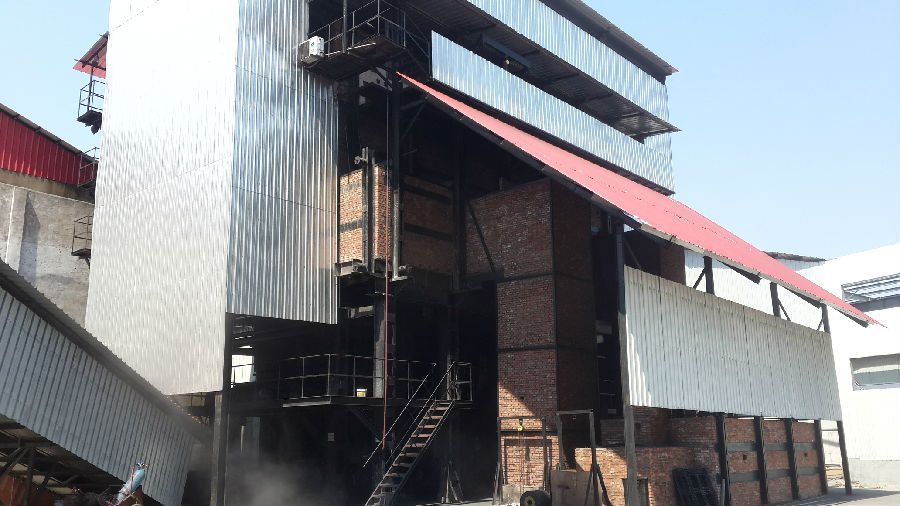
- Q: How do monolithic refractories withstand high temperatures and thermal cycling?
- Monolithic refractories are designed to withstand high temperatures and thermal cycling due to their unique composition and structural characteristics. Firstly, monolithic refractories are made from high-quality raw materials, such as alumina, silica, and magnesia, which have excellent thermal properties. These materials possess high melting points and low thermal conductivity, allowing them to retain their strength and integrity even at extreme temperatures. Moreover, monolithic refractories are typically engineered to have a dense and compact microstructure. This dense structure prevents the penetration of heat and gases, thus minimizing thermal shock and preventing the formation of cracks. Additionally, the compact microstructure enhances the refractory's thermal conductivity, enabling it to efficiently distribute and dissipate heat. Furthermore, monolithic refractories are often formulated with special additives and bonding agents that enhance their resistance to thermal cycling. These additives can improve the refractory's thermal expansion properties, allowing it to expand and contract without cracking or spalling during rapid temperature changes. Additionally, certain bonding agents can provide a degree of flexibility to the refractory, enabling it to accommodate thermal stresses without compromising its structural integrity. In addition to the inherent characteristics of monolithic refractories, proper installation techniques also play a crucial role in their ability to withstand high temperatures and thermal cycling. The refractory must be carefully applied and cured to ensure uniformity and minimize the formation of internal stresses. Adequate curing and heat treatment processes help to develop a strong and durable bond between the refractory and the substrate, enhancing its resistance to thermal shock and cyclic thermal loading. Overall, monolithic refractories are engineered to withstand high temperatures and thermal cycling through their composition, microstructure, and installation techniques. These factors work in synergy to provide the refractory with excellent thermal conductivity, resistance to thermal shock, and the ability to expand and contract without compromising its structural integrity.
- Q: What are the advantages of using insulating castables in the iron and steel industry?
- There are several advantages of using insulating castables in the iron and steel industry. Firstly, insulating castables provide excellent thermal insulation. They have low thermal conductivity, which helps to minimize heat loss from the furnaces and other equipment. This is particularly important in the iron and steel industry, where high temperatures are required for various processes. The insulation provided by castables helps to maintain a stable temperature within the furnace, resulting in improved energy efficiency and reduced fuel consumption. Secondly, insulating castables have high strength and excellent resistance to thermal shock. This is crucial in the iron and steel industry, where extreme temperature changes are common. The castables can withstand rapid heating and cooling cycles without cracking or compromising their structural integrity. This ensures the longevity and durability of the refractory lining, reducing the need for frequent maintenance and repairs. Furthermore, insulating castables are lightweight and easy to install. Their low density makes them easier to handle and transport, resulting in reduced labor costs and shorter installation times. This is particularly advantageous in large-scale iron and steel plants, where time and cost efficiency are critical. Moreover, insulating castables offer good corrosion resistance. The harsh environment in the iron and steel industry, with the presence of molten metal, slag, and various chemicals, can cause corrosion and erosion of refractory materials. Insulating castables are designed to withstand these corrosive conditions, ensuring the longevity of the lining and minimizing the risk of downtime and production disruptions. Lastly, insulating castables are versatile and can be customized to meet specific requirements. They are available in various compositions and densities, allowing for tailored solutions to different applications within the iron and steel industry. This versatility ensures optimal performance and efficiency in various furnace and equipment designs. In conclusion, the advantages of using insulating castables in the iron and steel industry include excellent thermal insulation, high strength, resistance to thermal shock, lightweight installation, corrosion resistance, and versatility. These benefits contribute to improved energy efficiency, reduced maintenance costs, increased durability, and enhanced overall productivity in the industry.
- Q: How do monolithic refractories withstand thermal shock and mechanical stress?
- Monolithic refractories are engineered to withstand high temperatures and harsh working conditions, making them ideal for applications that involve thermal shock and mechanical stress. Firstly, monolithic refractories are designed with a high thermal conductivity, which allows them to quickly absorb and distribute heat. This property helps to minimize thermal gradients within the material, reducing the risk of thermal shock. When exposed to sudden temperature changes, the refractory material expands and contracts uniformly, preventing cracks and fractures from forming. Secondly, these refractories have excellent thermal shock resistance due to their low thermal expansion coefficient. This means that they have a minimal tendency to expand or contract when subjected to temperature fluctuations. As a result, they can withstand rapid changes in temperature without experiencing significant structural damage. Furthermore, monolithic refractories possess high mechanical strength, enabling them to withstand various types of mechanical stress. They are formulated with carefully selected raw materials and additives that enhance their load-bearing capacity and resistance to mechanical forces. This enables them to withstand the weight of the surrounding materials, as well as any external forces or vibrations that may be present in the application environment. Moreover, monolithic refractories have good structural integrity and stability, thanks to their dense and compact microstructure. These materials are typically formed by a combination of fine powders, binders, and additives, which are mixed and shaped to create a solid, cohesive structure. This structure provides resistance against mechanical stress, preventing the refractories from crumbling or disintegrating under pressure. In summary, monolithic refractories withstand thermal shock and mechanical stress through their high thermal conductivity, low thermal expansion coefficient, robust mechanical strength, and structural integrity. These properties make them reliable and durable materials for applications requiring resistance to extreme temperatures and challenging operating conditions.
- Q: How do monolithic refractories contribute to the overall efficiency of ladle cleaning operations?
- Enhancing the overall efficiency of ladle cleaning operations is a crucial role played by monolithic refractories. Composed of a single, homogeneous structure, these refractory materials offer several key advantages that contribute to improved efficiency. To begin with, monolithic refractories possess exceptional thermal insulation properties. This means they can withstand high temperatures without cracking or deteriorating, thereby allowing for more efficient and effective ladle cleaning operations. By consistently maintaining a specific temperature, these refractories minimize heat loss and ensure uninterrupted and timely completion of the cleaning process. Furthermore, monolithic refractories exhibit high resistance to chemical attacks. In steelmaking processes, ladles often come into contact with aggressive molten metals and slag that can erode and corrode the refractory lining. However, monolithic refractories are designed specifically to endure these harsh conditions, providing a longer service life and reducing the need for frequent repairs or replacements. This not only saves time but also reduces the overall cost of ladle maintenance. In addition, monolithic refractories possess excellent flowability and workability. They can be easily shaped and installed in the ladle lining, enabling quick and precise application. This ease of installation results in shorter downtime during ladle cleaning operations, as the refractory lining can be swiftly repaired or replaced. Moreover, the flowability of monolithic refractories ensures better coverage and adherence to the ladle's surface, leaving no gaps or weak points. This enhances the overall effectiveness of the cleaning process and prevents potential contamination or reactivity issues. In conclusion, monolithic refractories significantly contribute to the overall efficiency of ladle cleaning operations by providing exceptional thermal insulation, high resistance to chemical attacks, and easy workability. These properties lead to reduced downtime, increased durability, and cost savings, making monolithic refractories a vital component in optimizing ladle cleaning processes.
- Q: What are the key properties of patching mixes used for monolithic refractory repairs?
- The key properties of patching mixes used for monolithic refractory repairs include high thermal conductivity, excellent adhesion, good workability, high strength, resistance to thermal shock, and suitable setting and drying times. These properties ensure effective repairs and long-lasting performance in high-temperature applications.
- Q: What are the main factors affecting the abrasion resistance of monolithic refractories?
- The main factors affecting the abrasion resistance of monolithic refractories are the composition of the refractory material, the size and shape of the abrasive particles, the velocity and angle of impact of the abrasives, and the temperature and pressure conditions in the application environment.
- Q: How do monolithic refractories contribute to energy efficiency in iron and steel manufacturing?
- The use of monolithic refractories is crucial for improving energy efficiency in iron and steel manufacturing processes. Made from a single material, typically a combination of high-quality aggregates, binders, and additives, these refractories are easily installed and repaired. One way in which monolithic refractories enhance energy efficiency is by minimizing heat loss. Their excellent insulation properties help maintain high temperatures in the furnace or kiln. This reduces the energy needed to maintain the desired temperature, resulting in lower energy consumption and cost savings. Additionally, monolithic refractories are designed with high thermal conductivity, allowing for efficient heat transfer from hot gases or flames to the iron and steel being processed. This leads to faster heating rates and shorter processing times, resulting in energy savings and increased production capacity. Another advantage of monolithic refractories is their ability to withstand extreme temperatures and harsh conditions. They are resistant to thermal shock, corrosion, and erosion, which extends their lifespan and reduces the need for frequent repairs or replacements. This minimizes downtime, enabling continuous operation and improved energy efficiency. Moreover, monolithic refractories offer design flexibility, allowing for the optimization of furnace and kiln geometries. By customizing the shape and dimensions of the refractory linings, heat distribution can be improved, ensuring more uniform heating and reducing energy wastage. This flexibility also enables the implementation of advanced combustion technologies, further enhancing energy efficiency. In conclusion, monolithic refractories contribute to energy efficiency in iron and steel manufacturing through the reduction of heat loss, enhancement of heat transfer, ability to withstand extreme conditions, optimization of furnace geometries, and facilitation of advanced combustion technologies. By utilizing these refractories, the industry can achieve significant energy savings, cost reductions, and environmental benefits.
- Q: How do monolithic refractories improve the efficiency of ladle and tundish drying furnaces?
- Monolithic refractories improve the efficiency of ladle and tundish drying furnaces in several ways. Firstly, monolithic refractories offer a high degree of thermal insulation. These refractories have low thermal conductivity, which means they can effectively reduce heat transfer from the furnace to the surrounding environment. This insulation property helps to minimize heat losses, allowing the furnace to maintain a higher temperature for a longer period of time. As a result, the drying process becomes more efficient as the heat is retained within the furnace, reducing the overall energy consumption. Secondly, monolithic refractories have excellent resistance to thermal shock. During the heating and cooling cycles of the furnace, rapid temperature changes can cause stress and cracks in the refractory material. However, monolithic refractories are designed to withstand these thermal shocks and maintain their structural integrity. This durability ensures a longer lifespan of the refractory lining, reducing the need for frequent repairs or replacements. Consequently, the furnace operates at optimal efficiency without the downtime associated with maintenance. Additionally, monolithic refractories provide good mechanical strength and abrasion resistance. These properties are crucial in ladle and tundish drying furnaces, as they are exposed to mechanical stresses and abrasive materials such as molten metal and slag. The use of monolithic refractories ensures that the lining can withstand these harsh conditions without undergoing structural damage. This resistance to wear and tear increases the overall efficiency of the furnace, as it can operate for longer periods without interruptions. Lastly, monolithic refractories offer greater design flexibility compared to traditional brick or tile refractories. Their ability to be cast or gunned onto the lining surface allows for easy installation and repair. This flexibility enables the furnace to be customized and adapted to specific requirements, ensuring optimal heat distribution and efficient drying processes. In conclusion, monolithic refractories improve the efficiency of ladle and tundish drying furnaces through their thermal insulation, resistance to thermal shock, mechanical strength, and design flexibility. By reducing heat losses, increasing durability, withstanding harsh conditions, and allowing for easy installation and repair, these refractories optimize the performance and energy efficiency of the furnaces.
- Q: How do monolithic refractories withstand the thermal cycling in aluminum smelting applications?
- Monolithic refractories are specifically designed to withstand the extreme thermal cycling conditions encountered in aluminum smelting applications. The unique properties of these refractories allow them to endure the rapid and repetitive heating and cooling cycles without significant damage or failure. One key feature of monolithic refractories is their excellent thermal shock resistance. This property enables them to withstand sudden temperature changes without cracking or spalling. During the aluminum smelting process, the refractories are exposed to extreme temperatures when molten aluminum is poured into the molds or when the molten metal comes in contact with the refractory lining. The refractories must be able to absorb and dissipate the heat rapidly to prevent thermal shock damage. Another important characteristic of monolithic refractories is their high thermal conductivity. This property facilitates the efficient transfer of heat away from the refractory lining, reducing the risk of thermal stress and thermal fatigue. The refractories can effectively disperse the heat generated during the smelting process, minimizing the temperature differentials within the lining and preventing cracks or fractures. Furthermore, monolithic refractories possess good chemical resistance, which is crucial in aluminum smelting applications. They are formulated to resist the corrosive effects of molten aluminum and other chemicals present in the smelting process. This resistance helps to maintain the integrity of the refractory lining and prolong its service life. Additionally, monolithic refractories are often reinforced with fibers or other structural materials to enhance their mechanical strength and durability. These reinforcements provide added resistance against mechanical stresses, such as thermal expansion and contraction, which occur during the thermal cycling process. In conclusion, monolithic refractories are designed to withstand the thermal cycling conditions encountered in aluminum smelting applications. Their excellent thermal shock resistance, high thermal conductivity, good chemical resistance, and mechanical strength allow them to endure the extreme temperature fluctuations without significant damage. These refractories play a crucial role in maintaining the integrity and efficiency of the smelting process in the aluminum industry.
- Q: How do monolithic refractories contribute to reducing downtime in iron and steel plants?
- The use of monolithic refractories plays a vital role in minimizing downtime in iron and steel plants. They have several key advantages over traditional brick refractories. To begin with, monolithic refractories are highly adaptable and can be easily shaped and installed. This allows for faster repairs and replacements. In contrast to brick refractories, which require time-consuming and labor-intensive processes like bricklaying and mortar application, monolithic materials can be directly applied in a castable or gunning form. This significantly reduces the time needed for repairs. Furthermore, monolithic refractories offer better thermal insulation and resistance to thermal shocks, which are common in iron and steel plants. This improved thermal performance helps to maintain stable operating temperatures and prevents sudden temperature fluctuations that can lead to refractory failure and subsequent downtime. By minimizing these thermal shocks, monolithic refractories increase the overall lifespan of the refractory lining, reducing the need for frequent repairs. Moreover, monolithic refractories provide superior chemical resistance compared to traditional brick refractories. Iron and steel plants often face aggressive chemical environments due to the presence of molten metal, slag, and other corrosive substances. Monolithic refractories are specifically designed to withstand these harsh conditions, preventing chemical attacks and erosion of the refractory lining. As a result, the occurrence of unscheduled shutdowns due to refractory degradation is significantly reduced. Lastly, monolithic refractories offer better dimensional stability, minimizing the risk of cracks and spalling caused by thermal cycling and mechanical stress. This increased resistance to wear and tear ensures that the refractory lining remains intact for a longer period, reducing the frequency of maintenance and enhancing the overall operational efficiency of the iron and steel plant. In conclusion, monolithic refractories contribute to downtime reduction in iron and steel plants by providing faster installation, improved thermal insulation, superior chemical resistance, and enhanced dimensional stability. Their versatility and performance advantages make them a reliable choice for maintaining an efficient and dependable refractory lining, ultimately reducing the frequency and duration of plant shutdowns.
Send your message to us
Monolithic Refractories for Iron and Steel Industry - Coaly Carbon Additive with Good Quantity
- Loading Port:
- China main port
- Payment Terms:
- TT or LC
- Min Order Qty:
- 20 m.t
- Supply Capability:
- 1000 m.t/month
OKorder Service Pledge
OKorder Financial Service
Similar products
Hot products
Hot Searches
Related keywords
